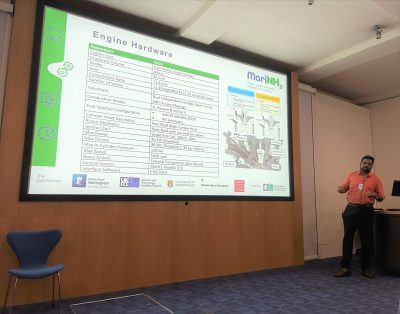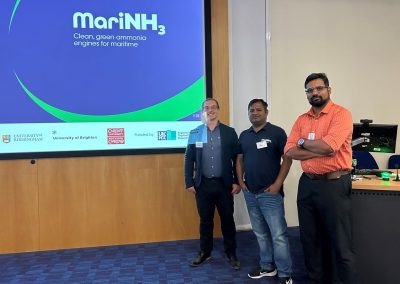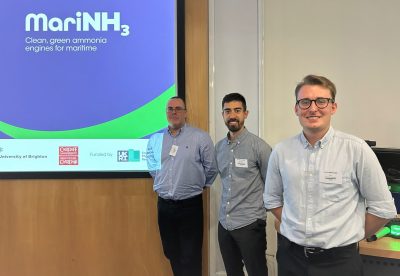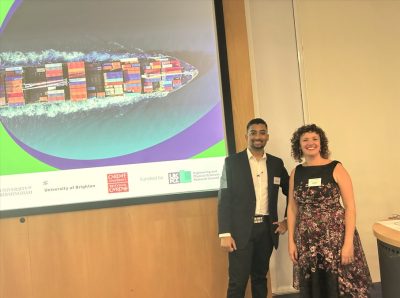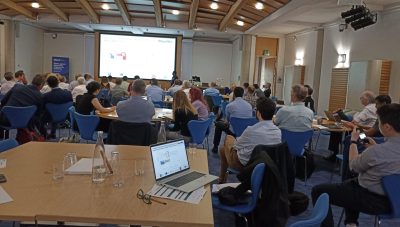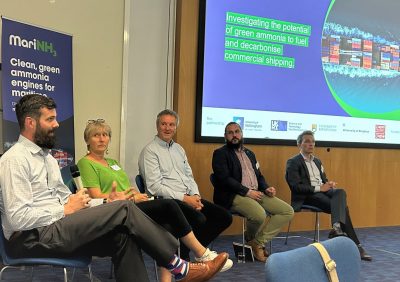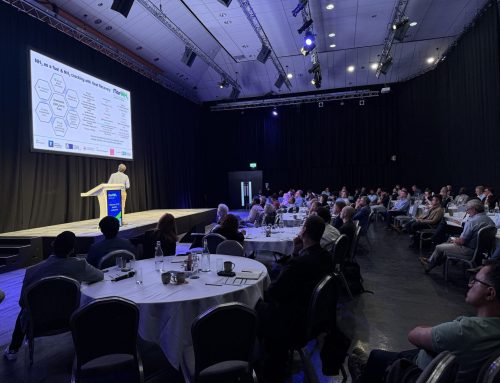Over 80 delegates from industry and academia gathered in Nottingham for the MariNH3 conference on 28 June, where the research team shared updates on the progress that’s been made during the first 12 months of the five-year research programme.
MariNH3 is an EPSRC-funded research programme investigating the decarbonisation of marine through multidisciplinary research set around disruptive ammonia engine concepts which have the potential to minimise end-use energy demand and pollutants. The goal is to help develop the best technical solutions in parallel to appropriate ammonia acceptance criteria and policies.
Researchers from the programme’s academic partners reported on progress in the areas of engine applications, fuel preparation and acceptance criteria.
Engine application work covered the results to date of running ammonia on a spark ignition engine, progress on emissions from ammonia combustion engines and possibilities for aftertreatment solutions, and work that’s been undertaken on hydrogen in the heavy-duty transport sector.
The fuel preparation theme included progress and results on fuel spray imaging, as well as updates on ammonia and hydrogen storage.
The afternoon session turned to safety challenges, legislation and acceptance which are being addressed within the programme alongside the engineering work.
Life cycle analysis of ammonia fuelled engines aims to evaluate and compare the environmental impacts of different marine fuels from production to end use, looking at them within a ‘well-to-wake’ lifecycle phase of marine fuel. Reese Murugan updated delegates with progress in this area, whilst Dr Laura Norris reported on policy and legislation relating to ammonia.
She said: “We are on the cusp of things starting to happen from a legislative perspective. Green ammonia is well positioned to become a leading net-zero fuel for the shipping industry, yet the current lack of visibility of future effects of regulation are problematic.
The current legislative horizon ends in 2026, where new metrics must be introduced that provide stimulus for the rollout of green ammonia as a maritime fuel.
Pathways are already being established for the governing of marine fuels such as methanol and ethanol. Through collaboration, the green ammonia industry is poised to pave a pathway to a well-functioning net-zero industry.”
As well as keynote speeches from Professor Christine Rousselle from University of Orléans on Ammonia Combustion Challenges for IC Engines, and from Dr Paul Davies, Global Head of Technology for Risk Assessment, Lloyds Register on Safety Challenges, the conference finished with an interactive discussion on the results so far, chaired by Steve Sapsford of SCE.
Professor Alasdair Cairns, MariNH3 Programme Director, said: “I’m delighted with the progress that we’ve made in our first 12 months. The presentations we’ve seen today highlight both the viability of ammonia combustion and remaining critical technical and socio-economic challenges we will be addressing over the coming years.
The research is attracting a high level of interest from industry, as evidenced by the attendance here today. We are working with 26 industry partners as part of the programme, but events like this enable us to engage with an even wider audience so we can ensure that whilst this is an academic programme, it is industry relevant too.”
- Ajith Ambalakatte presenting
- Dr George Brinklow, Dr Vikas Sharma & Ajith Ambalakatte
- Dr Tony Giles, Dr Marcus Adams & Jonny Betteridge
- Reese Murugan & Dr Laura Norris
- MariNH3 conference
- Industry panellists
